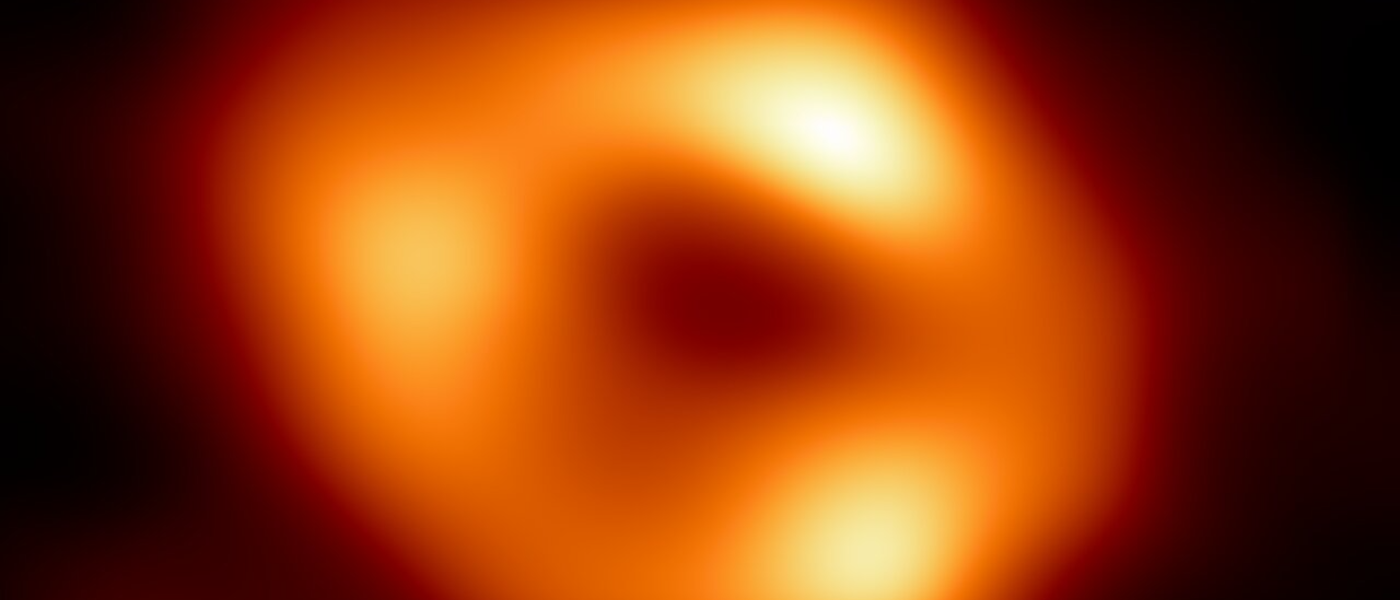For the first time ever, we have a picture of the black hole at the center of the Milky Way galaxy

Liberty Science Center’s Jennifer Chalsty Planetarium, the largest planetarium in America, opened in 2017 – and since its opening, the planetarium has done more than just show presentations!
The planetarium has also served as a conduit for leading-edge content in astronomy space sciences. For example, on May 2, 2022, at LSC’s Genius Gala, LSC honored Dr. Priya Natarajan of Yale –an internationally-known expert in black holes – with a Genius Award. That same event also featured a planetarium program based on Dr. Natarajan’s work.
And now, the Jennifer Chalsty Planetarium will feature an exciting new black holes breakthrough: the first actual picture taken of the supermassive black hole at the center of the Milky Way galaxy, which was just released today!

The image shows the swirling disk of matter that the black hole is eating, called an accretion disk, and a dark region at the center, which is the black hole itself. And, as predicted by Einstein’s general relativity theory, the black hole’s gravity is bending the paths of light rays coming from the disk, warping the image we see.
“We were stunned by how well the size of the ring agreed with predictions from Einstein’s theory of general relativity," said Geoffrey Bower, one of the scientists on the team that captured the image. "These unprecedented observations have greatly improved our understanding of what happens at the very center of our galaxy, and offer new insights on how these giant black holes interact with their surroundings.”
Scientists have long known this black hole exists. It was first discovered indirectly during observations of 18 stars that were orbiting around it. We couldn’t see the black hole itself, only the motions of surrounding stars as it pulled on them with its intense gravity. This is the first time we’ve ever been able to see the black hole directly.
Taking the Picture
No individual telescope on the planet could have taken this picture, because the black hole is so far away. We’d need a telescope the size of the whole Earth! Instead, scientists used the Event Horizon Telescope (EHT), which is actually a network of eight radio telescopes located at various places around the Earth, all working together.
This is the second photo of a black hole ever taken. The first was a picture of the supermassive black hole at the center of the galaxy m87, a picture which was released in 2019, also by the EHT. Even though that black hole is much farther away, it was targeted first for a picture because it’s easier to capture in an image. That’s because, unlike our own Milky Way’s supermassive black hole, we don’t have to look through the bulk of the Milky Way to see it.
Additionally, because the m87 black hole is much bigger than Milky Way’s, its accretion disk is spinning much slower around the black hole. It’s always harder to take a picture of something moving rapidly; for example, try getting a (non-blurry) photo of a dog chasing its tail. Milky Way’s black hole is spinning so rapidly that in order to produce the new photo, the researchers had to use a technique that takes an average of multiple images in order to make a clear, single image of the black hole.
The Future
Capturing this image was an incredible technological feat. Since the first black hole was imaged in 2019, three more telescopes were added to the coalition, and new sophisticated tools had to be added in order to image the smaller, faster black hole. But that’s only the beginning!
The EHT hopes to continue to improve resolution, eventually creating clearer images. The first two black hole pictures are a bit blurry, but that doesn’t always have to be the case. As the collaboration grows scientists hope to create new images with higher quality – and even movies of black holes in action!
The future of black hole images is bright. For now, you can see the new image on a massive dome at Liberty Science Center’s Jennifer Chalsty Planetarium.
